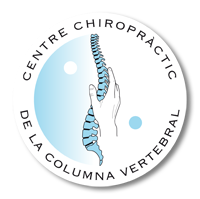Chiropractic treatment for Paresthesia
The term paresthesia refers to a clinical condition that involves an altered perception of sensitivity to different sensory stimuli.
What is Paresthesia?
In practice, they constitute an abnormal reaction to heat, touch, pain and vibrations.
Generally, paresthesia are problems that affect the central nervous system, peripheral or even blood circulation. To diagnose paresthesia you need to perform several tests.
Causes
The most common causes of paresthesia involve the functioning of the nervous system that interferes with alterations of various kinds.
Paresthesia is manifested by abnormal tingling sensations (punctures) not related to an actual sensory stimulus. Upon discovering the cause, the symmetry of the disorder should also be assessed: a high degree of symmetry suggests a systemic cause (metabolic vitamin deficiency, toxicity, pharmacology, infectious or post infectious).
The most common conditions that can cause paresthesia are: cervical osteoarthritis, headache, migraine, herniated disc, herpes, diabetes, multiple sclerosis, neuropathy, traumas and burns, among others. In the case of paresthesia of the lower limbs, it can also refer to restless leg syndrome, or tingling sensation in the legs, caused by a position that prevents proper blood circulation in the lower limbs, for example, keeping your legs crossed for a long time can lead to foot paresthesia. As in the case of the lower limbs, the upper limbs can also be affected by an incorrect position during sleep.
For example, sleeping with the arm under the body for several hours can causer paresthesia of the arm and paresthesia of the hand on waking, which can be recognized by the lack of sensation in the extremities followed by a very strong tingling sensation.
Treatment for paresthesia through chiropractic
When paresthesia is caused by peripheral neuropathies, it means that the nerves in the spinal cord are malfunctioning, caused by various traumas. Especially if it affects the lower back, paresthesia can cause symptoms such as back pain, leg pain or itching.
In addition, paresthesia can be the consequence of a compression injury to the nervous system.
The spinal cord, which is the main communication route of our nervous system, is located in the medullary canal within the vertebrae. The medulla transmits the orders given by the brain to the rest of the body and all the movements, functions and sensations are controlled by the nervous system. A problem in the spine can interfere with the nerves that leave the spine; this bad positioning or blockage is called subluxation. Subluxations can create various symptoms such as back pain, neck pain, headache, shoulder pain, limb paresthesia (extremities), sciatica, among other problems.
Chiropractic treatment consists of finding, treating and removing the subluxations found by your chiropractor, including vertebral adjustments and specific mobilizations with spinal decompression therapy. Your chiropractor will evaluate the neurological and muscle function and correct any dysfunction or subluxation.
Step by step treatment
Chiropractic care is a well-known therapeutic approach that focuses on the diagnosis, treatment and prevention of a variety of injuries including paresthesia due to subluxations associated with the musculoskeletal and nervous system. Chiropractic care helps to accurately realign the spine, as well as reduce pain and discomfort, improve swelling and inflammation and even increase strength, flexibility and mobility in other structures of the human body.
The first steps your chiropractor takes in your treatment for paresthesia will consist of a series of tests to create a personalized treatment program adapted to your specific case.
CONTRAINDICATED TO SIT
In the first 10 to 15 minutes after your visit it is contraindicated to sit down.
During this period of time it is necessary to walk to mobilize the joints that we just release and walking also facilitate better joint lubrication and nutrition of the intervertebral discs.
IN THE NEXT 24 HOURS
During the next 24 hours following the first sessions avoid any excessive effort.
Otherwise, the effectiveness of the adjustment received will decrease.
BEFORE AND AFTER
Before and after every visit, avoid all kinds of tension.
Both physical and mental. The more relaxed you are the more benefit you will get from your treatment.
THE APPOINTMENTS
The set appointments must be respected.
They have been established to obtain the best results.
AFTER AN ADJUSTMENT
The sensations that each person may experience after an adjustment may vary without affecting the result and benefit of the treatment in the medium and long term.
After an adjustment, you may experience a feeling of relaxation, having a lot of energy, general well-being, disappearance or relief of symptoms, soreness or pain.
You may sometimes even experience discomfort since the body has to adapt to the new posture and position.
Links of interest
Articles about Paresthesia




